
Wall texture paint
In the world of interior design, texture plays a crucial role in adding visual interest and depth to a space. Among the various techniques available, modern texture paint designs has gained immense popularity for their ability to transform plain walls into captivating focal points.
Contents
- 1 What is Texture Paint?
- 2 Choosing the Right Texture Paint Design
- 3 Application Techniques for Modern Texture Paint
- 4 Maintenance and Care for Textured Walls
- 5 Advantages and Disadvantages of Modern Texture Paint
- 6 Wall texture paint
- 7 Royal texture paint designs for Bedroom & Hall
- 8 How to do texture paint on wall
- 9 Conclusion
This article explores different modern wall texture paint designs and provides insights on how to choose the right one for your space.
Wall texture paint designs is a popular option when it comes to wall paint. There are various modern wall texture paint designs to choose from. Textured paint is a form of wall paint that looks like traditional paint but has small textured bumps on the surface. Textured paint is often compared to rubberized paint, which is a type of wall paint that is also often used in bathrooms.
What is Texture Paint?
Texture paint refers to a type of paint that contains additives or aggregates to create a tactile, three-dimensional surface on walls. It adds texture, pattern, and dimension to an otherwise smooth and flat wall, enhancing the overall aesthetics of a room.
Importance of Texture Paint in Interior Design
Texture paint serves as a versatile tool for interior designers and homeowners alike. It offers the opportunity to express creativity, introduce unique design elements, and create focal points within a room. Texture paint can evoke different moods and styles, ranging from rustic and natural to contemporary and abstract.
Exploring Different Modern wall Texture Paint Designs
- Smooth Finish Texture Paint: A sleek and seamless texture that provides a refined look to the walls. It offers a subtle texture without overpowering the overall design.
- Brushed Texture Paint: This technique creates brush-like strokes on the wall, adding a sense of movement and texture. It works well in contemporary and artistic spaces.
- Stucco Texture Paint: Inspired by traditional stucco finishes, this design offers a rough yet elegant texture. It can mimic the look of plastered or cemented walls.
- Metallic Texture Paint: Incorporating metallic particles, this paint creates a shimmering and reflective effect. It adds a touch of glamour and luxury to any space.
- Concrete Texture Paint: Providing an industrial and modern look, this design replicates the texture of raw concrete. It is ideal for creating an urban or minimalist ambiance.
- Geometric Texture Paint: This design involves creating geometric patterns or shapes on the wall using texture paint. It adds a contemporary and visually striking element to the room.
- Floral Texture Paint: By incorporating floral patterns and textures, this design brings a touch of nature indoors. It works well in spaces that aim for a fresh and vibrant atmosphere.
- Abstract Texture Paint: Abstract texture designs offer a creative and artistic touch to the walls. They can be customized to match the individual style and preferences of the homeowner.
- Gradient Texture Paint: This design involves blending different colors or shades to create a smooth transition from one hue to another. It adds depth and visual interest to the walls.
- Striped Texture Paint: Creating horizontal, vertical, or diagonal stripes using texture paint can give a room a unique and dynamic appearance.
- Textured Feature Wall: A single wall in a room can be designated as a focal point by applying texture paint to it. It creates a striking contrast with the surrounding walls.
Choosing the Right Texture Paint Design
When selecting a modern texture paint design for wall, consider the following factors:
Consider the Space and Lighting: Take into account the size of the room, natural light availability, and the overall ambiance you want to create.
Match the Style and Theme: Ensure that the wall texture paint design complements the existing decor and interior style of the space.
Experiment with Sample Swatches: Test different texture paint samples on your walls to visualize how they look in your specific setting.
Seek Professional Advice: Consult with professional interior designers or paint specialists to get expert guidance on choosing the right texture paint design.
Application Techniques for Modern Texture Paint
- Roller Application: Using a roller, apply the texture paint evenly on the walls. This technique works well for large surfaces and provides a uniform texture.
- Brush Application: Apply the texture paint using a brush to create brush strokes or patterns on the walls. It offers more control and allows for artistic freedom.
- Trowel Application: With a trowel, apply the texture paint in a smooth or rough manner, depending on the desired effect. This technique creates a textured finish with depth.
Maintenance and Care for Textured Walls
To ensure the longevity and beauty of textured walls, follow these maintenance tips:
- Cleaning and Dusting: Regularly clean the walls using a soft brush or microfiber cloth to remove dust and dirt from the textured surface.
- Repairing Damaged Areas: If any part of the textured wall gets damaged, use a patching compound to repair it. Match the texture as closely as possible for a seamless result.
Advantages and Disadvantages of Modern Texture Paint
Advantages:
- Adds depth, visual interest, and character to walls
- Conceals imperfections and uneven surfaces
- Provides a unique and personalized design element
- Enhances the overall aesthetics of a space
Disadvantages:
- Can be challenging to remove or change once applied
- Requires professional expertise for complex designs
- May be more expensive compared to regular paint
- Requires proper maintenance and care to retain its appearance
Wall texture paint
Wall texture paint is a type of paint that is applied to the walls of a room to create a more visually appealing space and to protect the walls. The paint comes in different colors and finishes. Most wall texture paints use acrylics, however, wall texture paint can also be made with latex, oil, or enamel.
Different manufacturers use different methods to create textured paint, which means that the texture of textured paint will differ slightly from brand to brand. There are various Modern wall texture paint designs to choose from.
Also read: Modern steel railing designs for balcony
Why to choose texture paint for walls?
Textured wall paint is a popular paint option these days, and for good reason. It adds depth and dimension to a room, making it feel warmer and more inviting. It can also help create the illusion of a larger space, which is especially useful in smaller spaces such as a hallway or an entryway. Textured wall paint comes in a variety of styles and finishes, from solid to patterned to marbleized, so you can find something that fits your decor and style.
Why choose paint for texture?
Painting a wall is one of the easiest ways to add texture to a room. You can use several different techniques to give your walls a variety of looks and feel. Each technique has its advantages and disadvantages, so it’s best to try a few different techniques to find the one that works best for the space you’re decorating.
Also read: Sand faced plaster and other Plaster finishes types
One of the simplest and most cost-effective methods to add interest to your house is to paint a wall. But sometimes, you just need a little something extra to make a plain wall look amazing. In this article, we’ll see how painted wall with texture give your walls an extra pop of style.
Royal texture paint designs for Bedroom & Hall
The wall with Royal texture paint designs are very clean and simple. Although the art style is simple, these are fun designs to work with. They would be a great addition to any room.
The direction of the brush strokes adds a nice contrast to the royalty and also makes the background more appealing. The designs taken here are from Asian Paints. See some popular Royal texture paint designs for Bedroom & Hall:
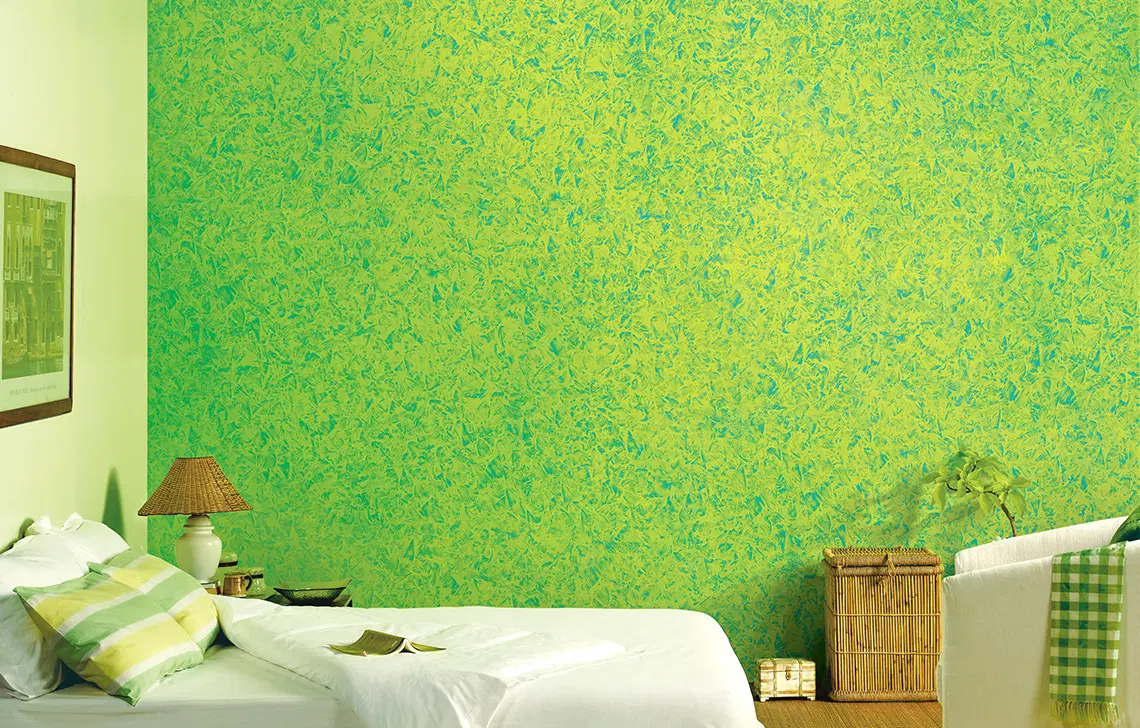
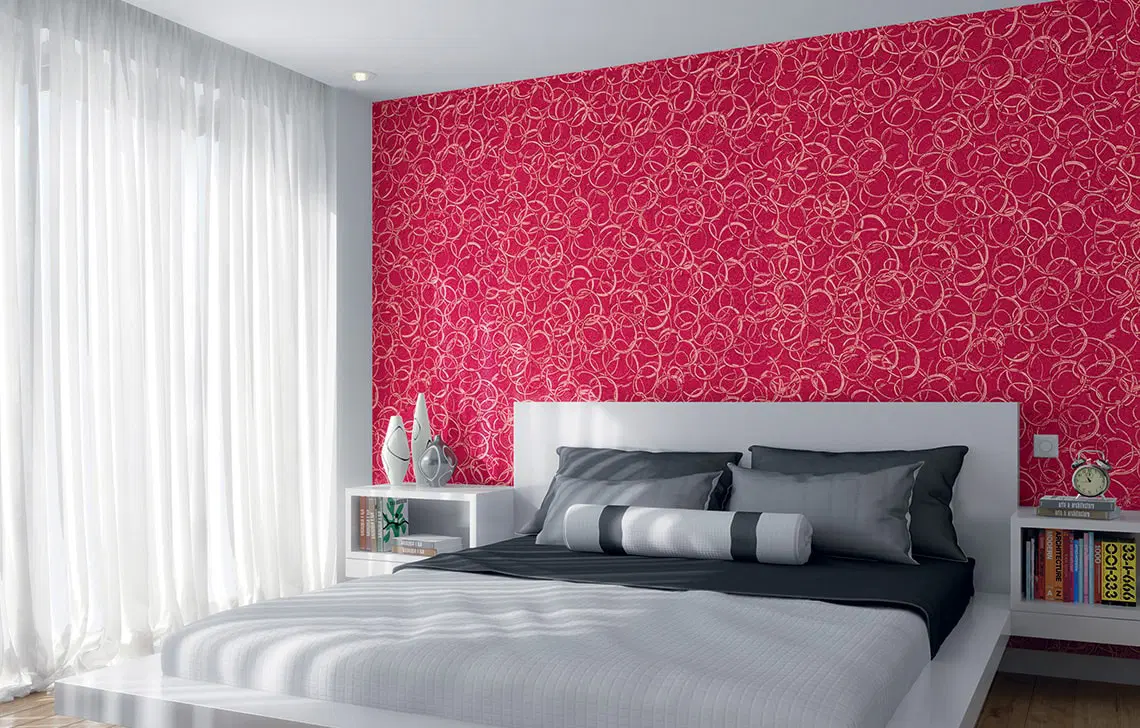
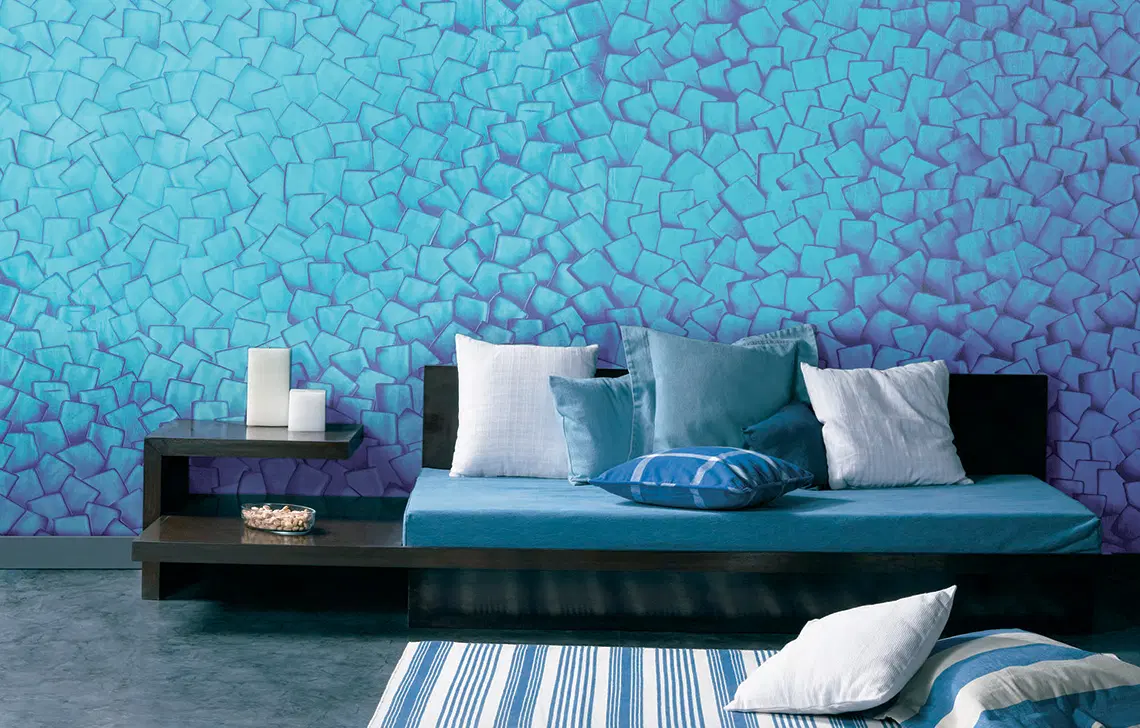
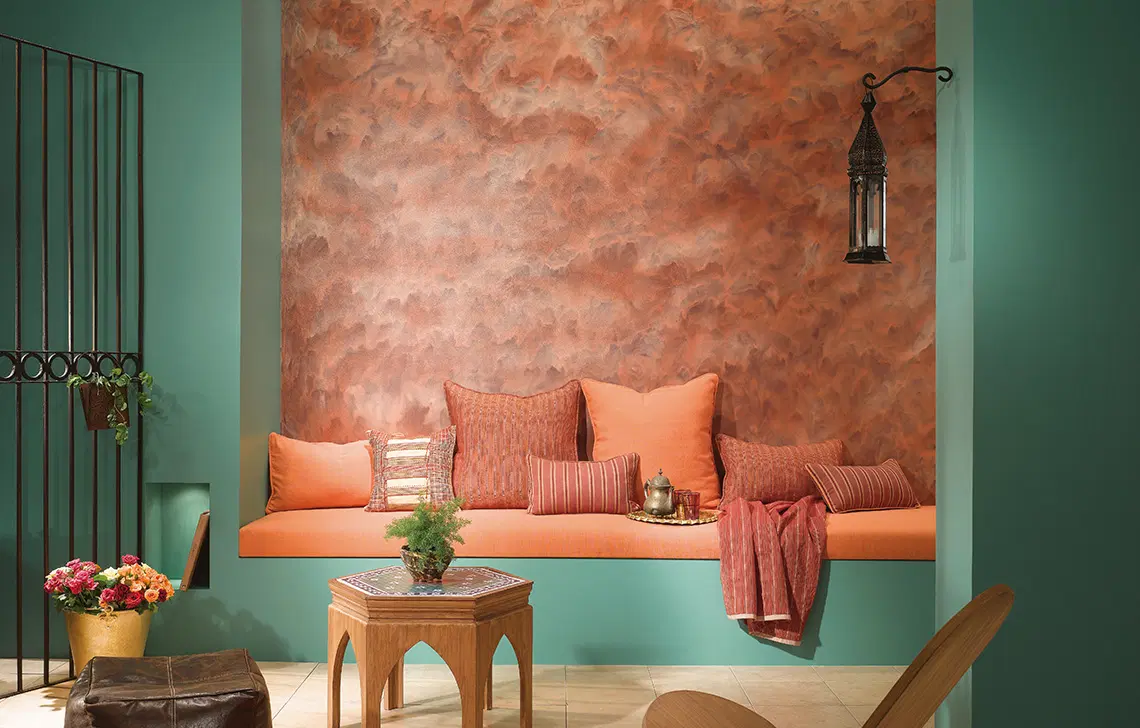
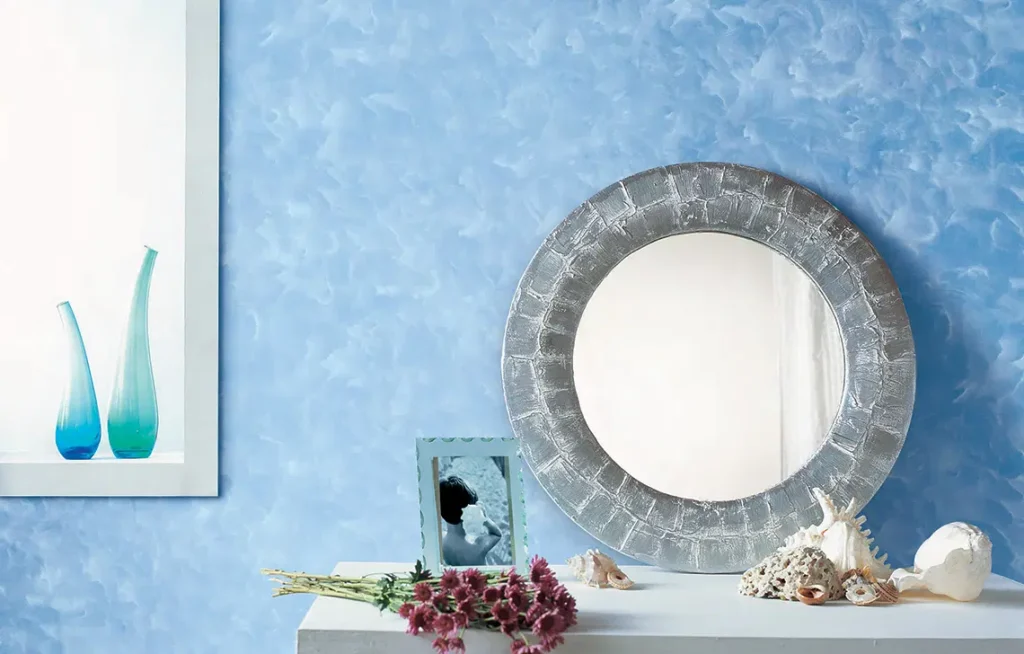
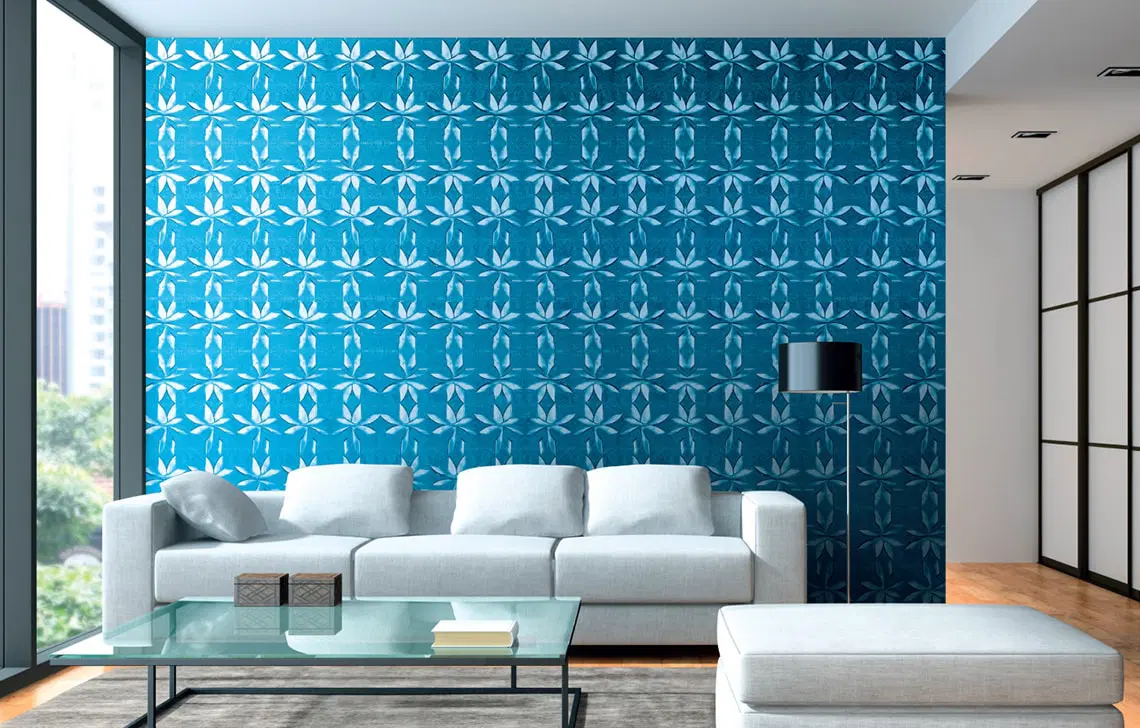
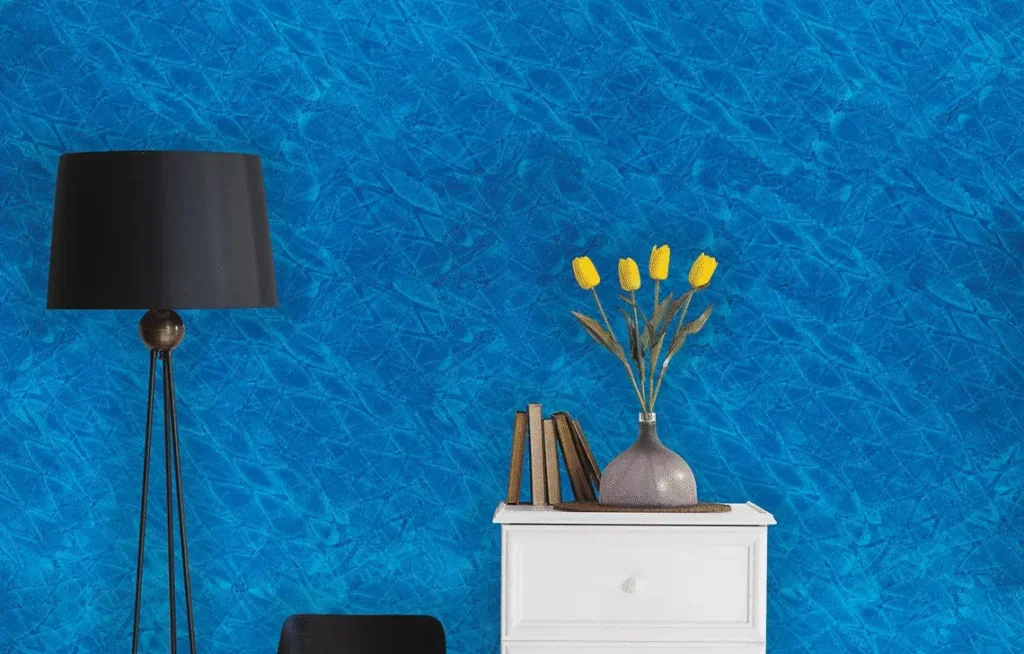
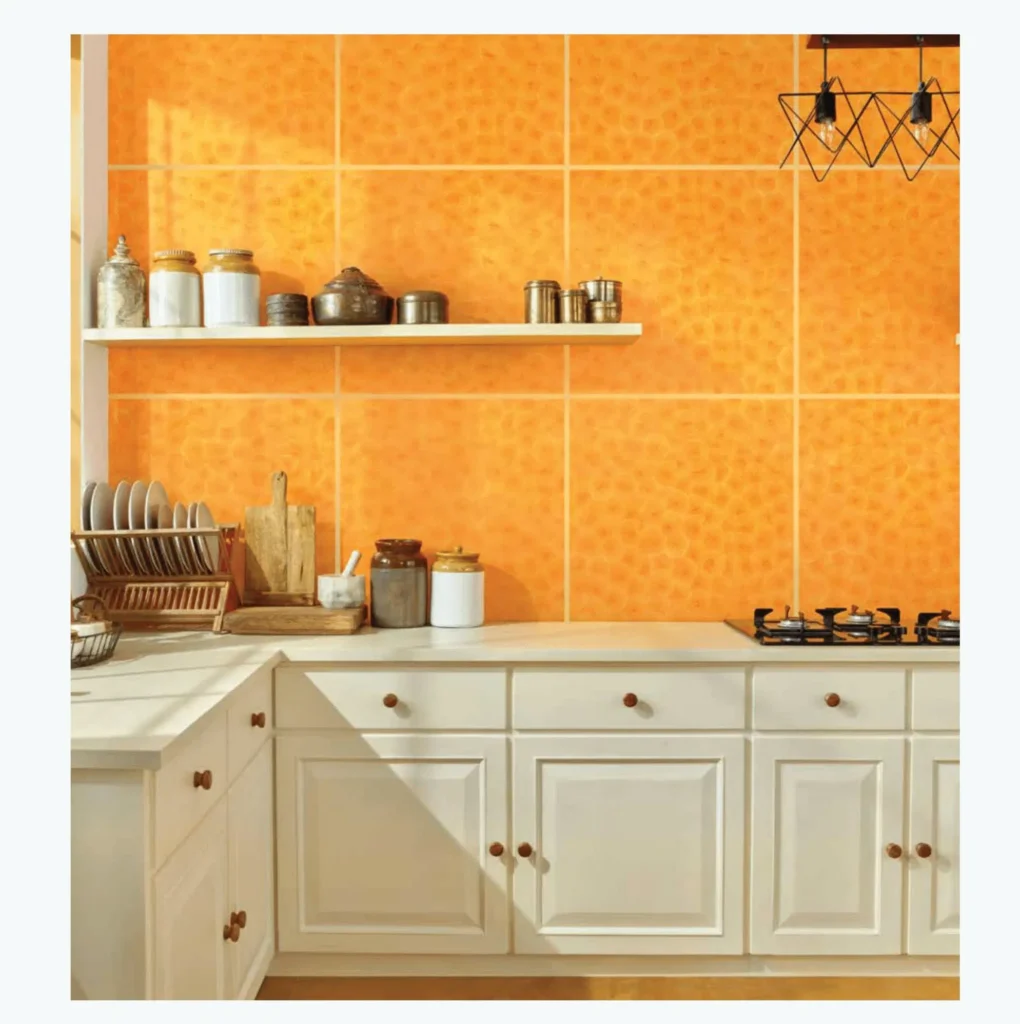
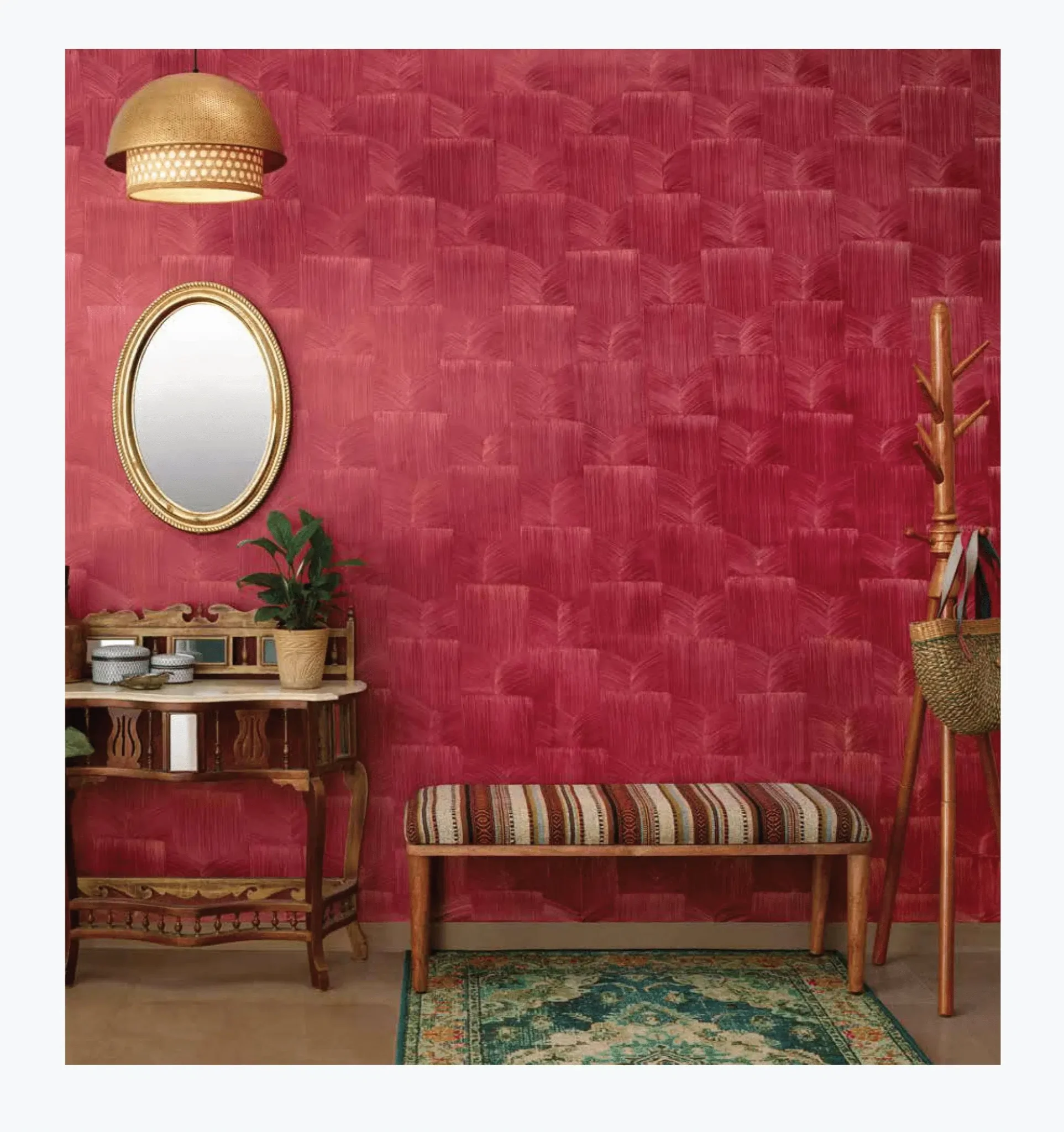
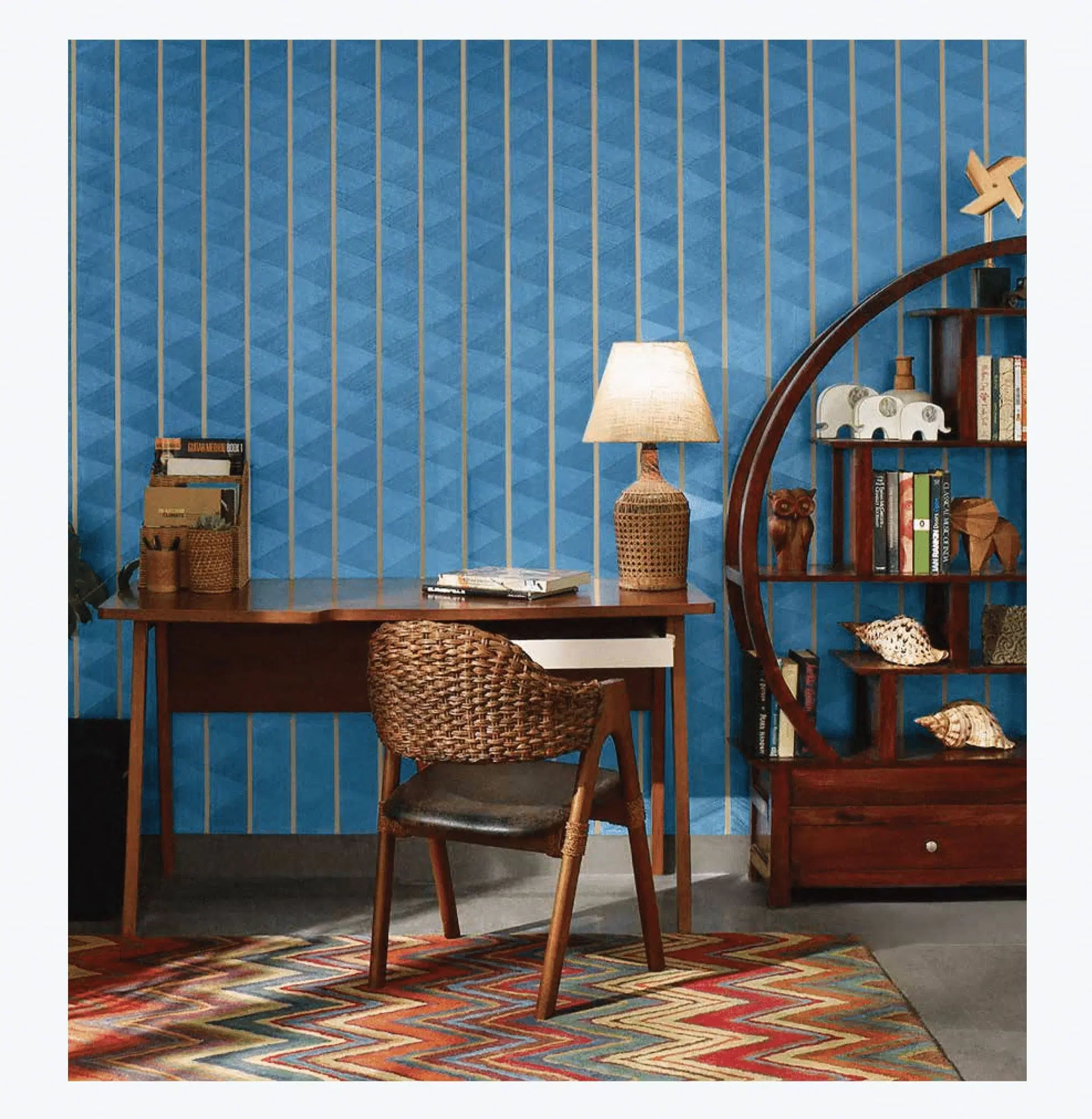
How to do texture paint on wall
If you want to put texture paint on huge sections of wall space but have very little knowledge of how to do it, it is best to have an experienced professional handle the work for you. After presenting the expert with all the ideas that you have found online, you can then proceed with the job that has to be done.
If you are a home decorator or an interior designer, there are a lot of do-it-yourself kits available that you can use to make textured walls. You may get the paints, the tools for generating various textures, and the pattern stencils if you need them, all in one convenient package.
Here are some of the equipment that may help you paint a wall with texture.
Wall painting equipment
Painting is one of the most fundamental skills you can learn in home decor. It can transform a bare wall into a focal point or bring a drab wall colour to life. But without the right tools and techniques, painting a wall can seem like an impossible feat.
Background colour and texture are two of the most important elements of a painting. They make a painting look more realistic and can add dimension and dimensionality to a painting. However, it can be difficult to achieve the right amount of background colour and texture in a painting.
Conclusion
Modern wall texture paint designs offer an exciting and creative way to transform plain walls into stunning features. By understanding different design options, considering the space and lighting, and seeking professional advice, you can choose the perfect texture paint design for your interior. Remember to maintain and care for your textured walls to ensure their long-lasting beauty.
How to paint a wall with texture
It is usually advisable that you begin with a small region and assess how the impact is before applying it more widely. You may create the appearance of your texture walls being one of a kind by combining two distinct colours. If you don’t have any equipment but still want to give your walls a textured appearance, you may use common household objects like bubble wrap, aluminium foil, or a hand towel to produce the desired effect.
